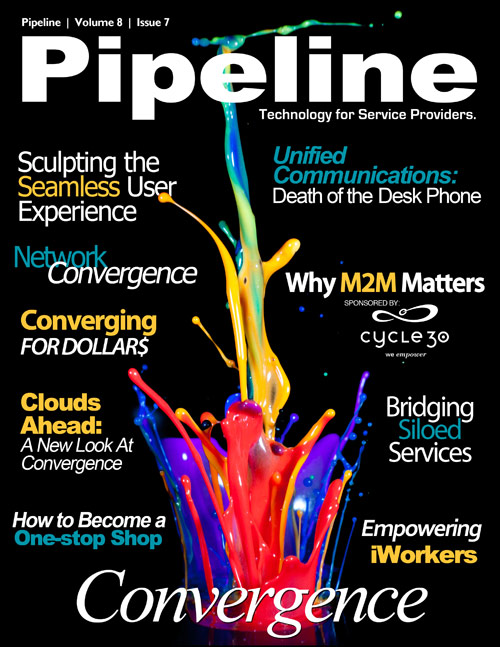The Promise of Converged Networks
There are obvious advantages to a converged network. Managing voice and data with the same system is intuitively more efficient that operating and billing across two separate platforms. A network operating with near-real-time response can be rapidly configured for new services, user profiles, or devices.
Jimmy Mizrahi, NG optical networking product line manager, ECI Telecom, described some specific benefits in further detail: "Converged solutions: reduce the total cost of the solution (less equipment, spare inventory, power consumption, real estate, connectivity between systems); simplify network operation (same look and feel for all network layers, simplify network troubleshooting, single interface to OSS system); and optimize the network resources (traffic is groomed by the appropriate layer and therefore network resources are optimized)."
The deeper promise of the converged network, however, is the way it can be leveraged to enhance service experience and deepen the customer relationship. "Network convergence creates a brand-new type of relationship with the end user that reaches beyond providing services and ingratiates the provider as in integral part of the customer's lifestyle," said Marc Hayden. This is the kind of thinking CSPs need to embrace to ensure their relevance in the future.

The Challenge of IP-Migration
Dialogic, a vendor with a solution that enables IP services over TDM networks explained one of the challenges to all-IP migration in a recent white paper. "Since TDM technology still serves the industry well, most carriers and businesses are moving to IP at a judicious pace and taking advantage of their sizeable investment in TDM by continuing to use it during this time of transition."
It appears, as one might expect, that carriers with the most money in the ground (cable, fiber, copper, cell towers), are taking a more measured approach to all-IP migration. I asked Marc Hayden, whose company has driven multiple network transformation projects for CSPs, about the rate of adoption. "Network convergence is inevitable. It is also extremely complex and requires comprehensive due diligence. We're seeing a rise in the adoption rate across the tiers, but it is a multi-faceted transformation that will take time to be fully realized."
So Who's Migrating, and Who's Championing Convergence?
As can be expected, network equipment manufacturers are beating the all-IP drum more loudly every year. And it's not like they're selling snake-oil; the new equipment is impressive, generally uses less power, and benefits from Moore's Law like everything in technology. It's just that carriers already own lots of top-end toys from the back catalog. Other loud proponents have arisen in the all-IP and IP-service camps, such as companies with a large play in SIP/VoIP, or businesses who have re-purposed their expertise in IP for telco.
Many of these solutions are already being used by smaller carriers that had the agility and liquidity to launch a transformation initiative. In Greece, Nokia Siemens Networks is already in phase two of a three-year network convergence contract with carrier Wind Hellas. A smooth migration of mobile EDGE services to the new convergent IP/MPLS network (using Juniper Networks' equipment) has been realized.









